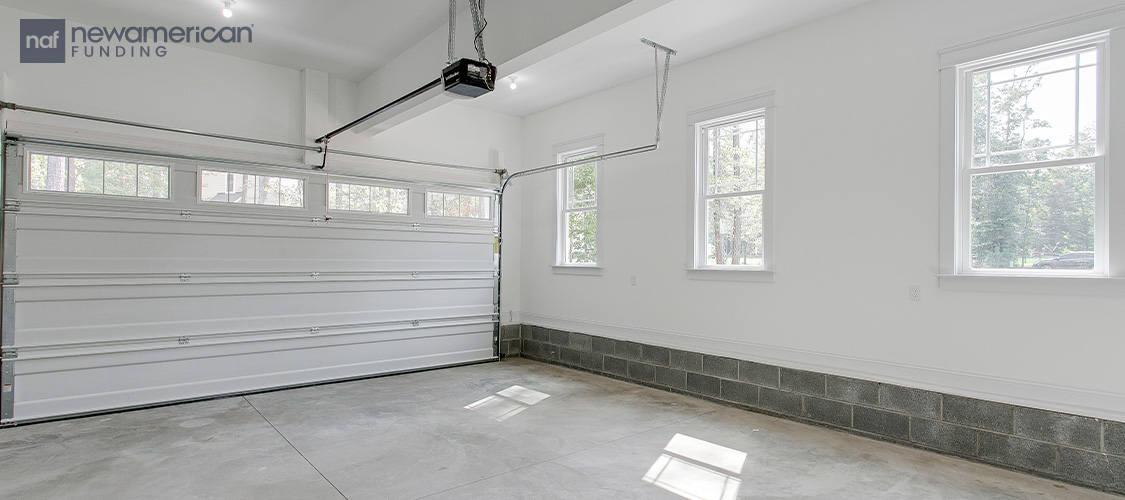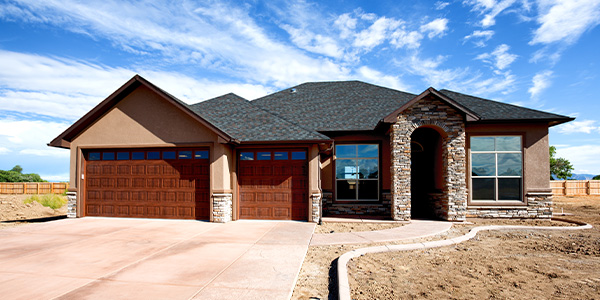Homebuyers
New Doesn’t Mean Perfect: What to Look for in a New Construction Home Walk-Through
May 8, 2025
The drywall is up, the fixtures are in, and that fresh paint smell still lingers. It’s finally time for your new construction walk-through, the last step before closing on a home that no one else has ever lived in.
Everything should be perfect, right? Not necessarily.
Even in brand-new homes, mistakes happen. A rushed installation, overlooked defects, or miscommunications between contractors can leave buyers with a repair list they weren’t expecting. And not everything is covered under warranty.
“I have seen mold, unbonded floor tiles, and everything in between,” said Jeff Lichtenstein, president and broker of Echo Fine Properties in Jupiter, Fla., when describing new construction walk-throughs.
That’s why your final walk-through isn’t just a formality—it’s your last chance to ensure everything is as it should be before the home officially becomes yours. Here’s what to focus on.
Start your home inspection outside

New homes are bright, shiny, and beautiful. But try not to get too distracted by the new appliances or the perfectly manicured yard.
“The quality of construction varies. Many components and trades go into the building of a home,” said Bruce Ailion of RE/MAX Town and Country in greater Atlanta, Ga. “It's not like buying a new car.”
That’s why it’s important to hire a home inspector to make sure everything appears to be in working order. Buyers will also want to do their own visual inspections.
Use a critical eye as you walk around the home. Look closely for cracks in the foundation, gaps in the siding, or uneven concrete work in the driveway and walkways.
Then check out the roofline. It should be in pristine condition, with no missing or misaligned shingles. Look for gutters and downspouts that are securely attached to the home and properly route water away from the foundation.
Inspect the doors and windows
Doors and windows see a lot of use in a home. Even the smallest issue now can become an expensive headache later.
Don’t hesitate to open and close every door and window to ensure they operate smoothly and latch properly. Windows should be free of scratches, and screens should be properly installed without rips or missing sections.
Check out the weather stripping—any gaps could impact insulation and energy efficiency. Finally, lock and unlock every entry point to confirm your future security.
Inspect the walls, floors, and ceilings
Brand-new construction should mean flawless finishes, but that’s not always the case.
Stand at different angles to check walls for uneven paint, drywall seams, or poorly sanded patches. Ceilings should be free of cracks, particularly where they meet the walls.
Walk through the home deliberately. If you hear squeaks in the flooring, feel uneven spots, or notice gaps in hardwood or tile, those are red flags.
Run your hand along the baseboards and trim. They should be neatly caulked and aligned, not haphazardly pieced together.
Test the kitchen and bathrooms

In areas like kitchens and bathrooms that see a lot of use, functionality matters.
Turn on every single faucet to check water pressure and temperature consistency. Flush every toilet—weak flushing power now could signal plumbing issues later. Open and close all cabinets and drawers to ensure they glide smoothly and align properly.
If your new home includes appliances, test them too. The oven should heat, the dishwasher should run without leaks, and the garbage disposal should hum to life without delay.
Don’t forget electrical and lighting systems
New homes should have perfect electrical systems, but that doesn’t mean they always do. Flip every light switch and check that all the fixtures work. Test electrical outlets by plugging in a phone charger—just because an outlet is there doesn’t mean it works.
In kitchens and bathrooms, press the test and reset buttons on ground-fault circuit interrupter (GFCI) outlets to make sure they also function correctly.
If the home has ceiling fans, turn them on to see if they wobble or make excessive noise.
Check the HVAC and plumbing
Don’t forget to look at the home’s heating, ventilation, and air conditioning systems.
“Always check a home’s major components,” said Lichtenstein. “Washer, dryer, AC, dishwasher, microwave, oven, refrigerator.”
Turn on the air conditioning and heating to confirm both work and respond properly. Stand by vents to ensure air is flowing evenly throughout the home.
Any strange noises—rattling, whistling, or clanking—could indicate poor installation. If the home includes a washer and dryer setup, check the hookups and run the washing machine (a rinse cycle will do) to confirm it drains properly.
Plumbing mishaps are some of the most expensive post-move-in surprises, so testing now is key.
Don’t forget the attic and garage

Some of the most overlooked areas in a walk-through are the attic and garage. In the attic, check for proper insulation and ventilation. Signs of moisture could indicate that there is a leak.
If your home has an automatic garage door, test it many times to ensure that it works and that the safety sensor works. Many buyers forget this small but important detail.
Finalize a fix list
Before signing off, document any issues. Take photos or videos to support any final repair requests. Anything the builder promises to fix should be put in writing as part of a formal punch list before closing.
If something feels off, bring in an independent home inspector who specializes in new construction. While many buyers assume inspections aren’t necessary for brand-new homes, a second opinion can catch things even a meticulous walk-through might miss.
“I have my buyers do a home inspection before they close,” added Lichtenstein. “Then another one before the warranty expires (usually within a year). Some items like grading won’t be discovered right away until the home settles. That’s why it’s critical to do a new inspection right before the warranty expires.”






 Smart Moves Start Here.
Smart Moves Start Here.